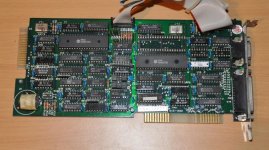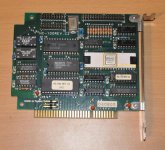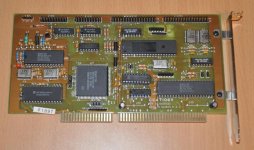Half-Saint
Experienced Member
After about 20 years of not using it, I picked up my parent's XT and brought it home. As soon as I turned it on, one of the orange caps near the keyboard connector just blew up. It's marked C8 and lies between the keyboard connector and JP4 2-pin connector. The only markings on the caps C6-C9 are 335F and that's it. What would be a suitable replacement?
After desoldering the bad cap, I can still turn the computer on but it reports 'Bad keyboard' during RAM count. Not sure, if that's because the keylock connector is not connected or the cap is the culprit.
This brings us to the second problem. I have no idea what goes where as none of the connectors on the board are labeled. Hence I can't connect power LED, turbo LED, turbo switch or keylock. Does anyone happen to have a manual?
Third question is about the power supply. The orange wire from P8/P9 connector is unplugged and isolated with tape. Why?
Cheers




After desoldering the bad cap, I can still turn the computer on but it reports 'Bad keyboard' during RAM count. Not sure, if that's because the keylock connector is not connected or the cap is the culprit.
This brings us to the second problem. I have no idea what goes where as none of the connectors on the board are labeled. Hence I can't connect power LED, turbo LED, turbo switch or keylock. Does anyone happen to have a manual?
Third question is about the power supply. The orange wire from P8/P9 connector is unplugged and isolated with tape. Why?
Cheers




Last edited:

